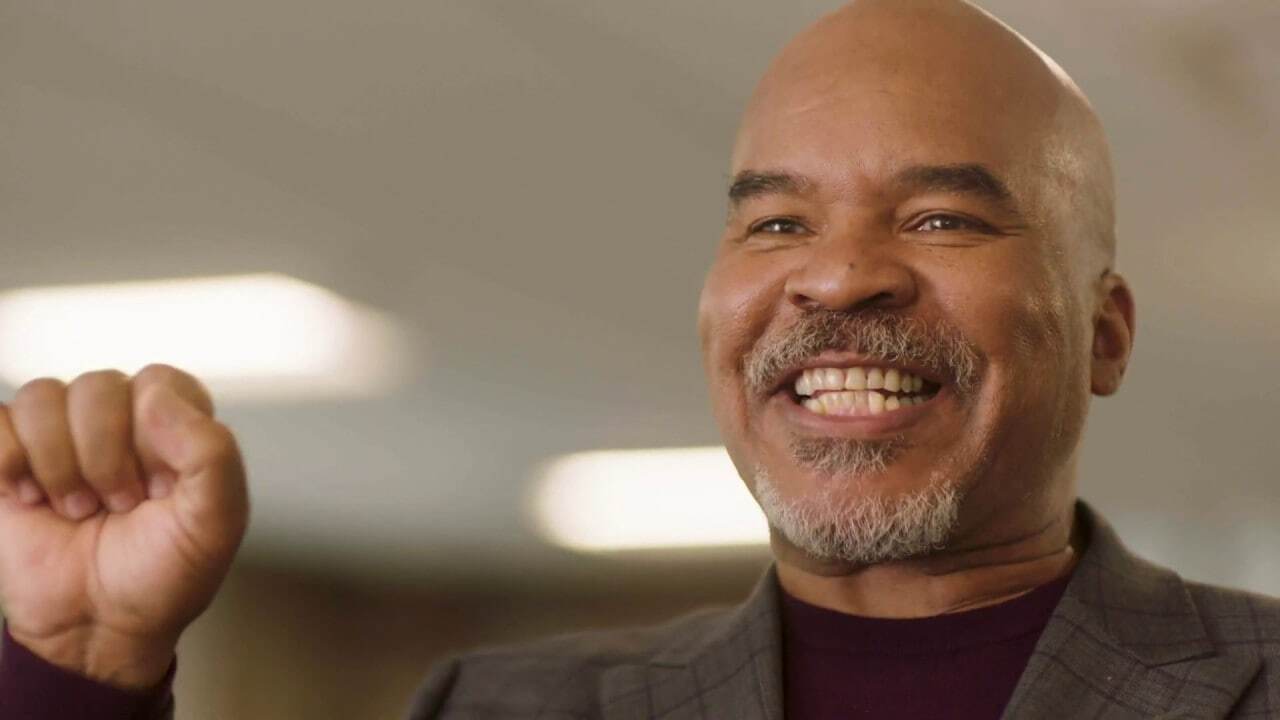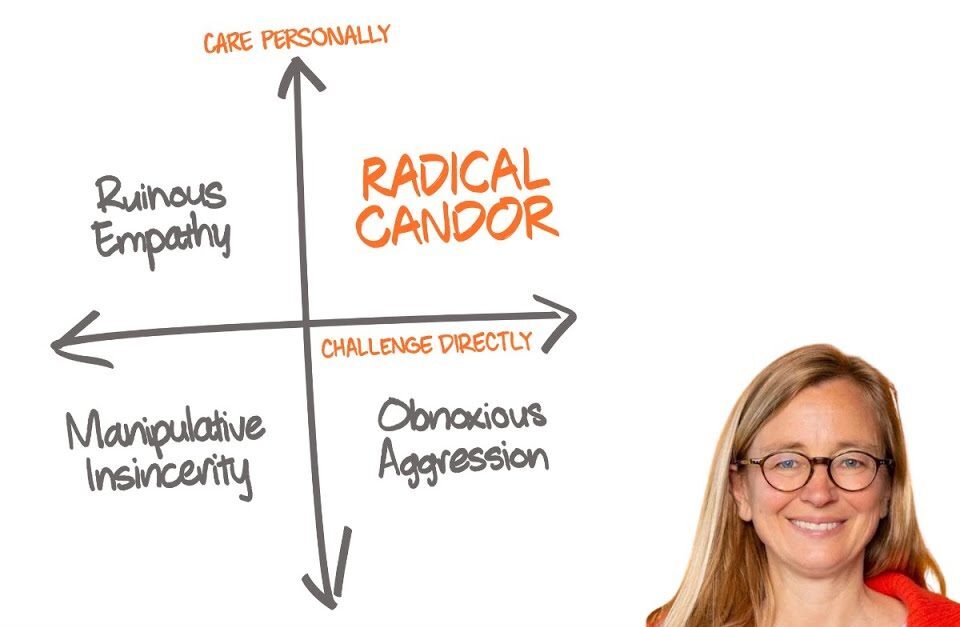Ruinous Empathy is a Waste of Your Time
Hi there - I'm Russ, and this is my first blog post for Candor, Incorporated. My Little League baseball players call me Coach Russ, and I'm going to...

I received a great question from a reader recently that I wanted to share.
I've been sending your article to all the leaders I know. One of them asked this:
In your discussions with Ms. Scott, did she discuss avoiding the perception that you are in the Obnoxious Aggression quad when your intent is Radical Candor? With perception so often complicating reality, a supervisor utilizing Radical Candor might find themselves chatting with the HR department for being “aggressive”. Military leaders often aren’t afforded the time to demonstrate how much they care about Airmen before they are required to give feedback. Particularly in times of crisis or war. If you haven’t built trust with your subordinates, can you still effectively use Radical Candor? If so, how?
I thought it was a good question. I know he, and I, would appreciate your thoughts when you have time.
- A Reader
This is not just a great question, it is THE central question of Radical Candor because it taps into the reason why Radical Candor is so rare.
Before I give you my thoughts, a caveat: I’ve never led people in life or death situations, so you should run my answer by those who have…. The leadership training you are getting in the military definitely translates to business--some of the very best people I worked with at Google and Apple were from the armed forces. However, I can’t say for sure if the leadership training I got at Google/Apple translates to military operations, so please run my thoughts by others who might be able to tell you/me where I’m wrong.
Radical Candor is just “basic maintenance,” like brushing your teeth. There are times when things have gone so badly wrong that to get to Radical Candor you have to do something big and painful like a root canal--or a conversation with HR :) But don't let the fear of needing a root canal prevent you from brushing your teeth. It’s not brushing your teeth that required you to get a root canal...and it’s not Radical Candor that lands you in that conversation with HR, though it often seems like it did, just as it's true that if you brush too hard, you can damage your enamel or gums... but that doesn't mean you should stop brushing your teeth!
Radical Candor doesn’t take a ton of time or require detailed instructions. Mostly, it just requires awareness. And while I’ve written a whole book on the subject and am about to give you a very long answer to your question, my most important message is that you already know how to do this. You already know how to tell somebody when they have spinach in their teeth. You already know how to show common decency, even to a stranger whose name you don't know, and also to build a deep relationship with a person. You just have to apply these skills to leadership.
Radical Candor is mostly expressed in the two-minute conversation you have with somebody when you see they’ve done something wrong, or something exceptionally well. Saying these things is hard, but it doesn’t require a ton of time nor does it benefit from a "formula."
It’s hard because we’ve been taught to be professional at work, and too often we take that to mean being something less than human. So we throw everything we know about ordinary human decency and the basics of human relationships out the window at work. That’s a terrible mistake. It’s also hard because we’ve been taught some version of “if you don’t have anything nice to say don’t say it at all” since we learned to speak. Now it’s your job to say it.
So, “just say it,” and be much more than just professional--be your whole self. You don’t need me to tell you what you think or who you are. You already know these things…express them!
If you are worried that you’re perceived as “Obnoxiously Aggressive” when you are trying to be “Radically Candid,” don’t just try to to be “nice.” The problem with all the “how to say it nicely” advice out there is that it addresses the symptom, not the root cause of the problem. And it can make you sound insincere. It can push you to a place that is far worse than Obnoxious Aggression: Manipulative Insincerity.
Even though it’s hard not to worry about your own reputation, especially when people are calling you an asshole, or worse, and when HR is breathing down your neck. But in order to be genuinely kind instead of merely nice, you have to let the fear go. Let go of perception and focus for just a moment on the other person in front of you. You don’t need to know intimate details of a person’s life, or even to know a person’s name, to react to the person with ordinary human decency.
Amarpreet Singh, a sales leader at Square whom I admire, has a good technique for helping the managers who work for him shift into a compassionate mindset quickly. When confronted with an employee whom you need to criticize, simply imagine the face of a person you love in your mind’s eye for just a moment.
Andy Grove, the legendary CEO of Intel, and perhaps the most Radically Candid person I ever met, once told me a story. A journalist was writing an article about mentorship and had talked to a man who said that advice Andy once gave him changed his life. How had Andy done it? Andy had to laugh. The truth was, he barely remembered the man or the advice he’d given him. Two decades ago, they’d once shared a cab from the airport to the office, and the man had asked him a question. Even though Andy was busy and had a lot on his mind, he was able to focus just for a few moments on the person beside him in the cab. He listened to the question, asked for some details, and then told the man what he really thought. Probably what he said was expressed with extreme clarity, and a bit critical, without sugarcoating. But Andy’s ability to focus momentarily on that man and his question was enough to show he cared. Even though what Andy said in the moment probably stung a bit, the man was still grateful 20 years later.
I’m pretty sure Andy didn’t use Amarpreet’s technique. His early ambition was to write fiction, so he had a natural curiosity about people that served him well as a leader. Tap into whatever resources are available to you so that you can see a person in front of you as a human being rather than an obstacle on your way to success.
In other words, “just say it” but take a moment to explain why you are saying it--because you’re trying to help. And to say it humbly. Words matter. That’s why I avoid words like subordinate. I know that’s the word used all the time. I don’t blame you for using it. But make sure the word doesn’t make you unconscious of the fundamental human equality between the two of you. Put hierarchy in its place. Finally, having said it, use what you already know about how to connect to people to make it OK once you’ve said it.
Leaders sometimes make the mistake of thinking that if they hang out in either the Ruinous Empathy or the Manipulative Insincerity quadrants, they can “build a relationship” with their employees and then move over to Radical Candor. So they're extremely pleasant, but a year goes by and employees start to realize that the only guidance they’ve received is "good job" and other vaguely positive comments. They know they’ve done some things wrong, but they’re not sure what, exactly. Employees of a boss who uses this strategy will never know where they stand, and they won’t have an opportunity to learn or grow. They often stall...or get fired. Needless to say, this strategy does not actually build trust.
Furthermore, when leaders let fear of hurt feelings or fear that others will perceive them as jerks or criticism from HR silence them when they should speak up, the silence is more likely to result in real Obnoxious Aggression than just saying it would. When people don’t tell people what they really think, when they bottle up criticism, they start to get frustrated. The frustration piles up inside like nuclear waste. It starts to leak toxicity and eventually, it goes critical and blows up like a dirty bomb, spewing stuff that’s seriously hard to clean up all over the landscape. Don’t let that happen!
People will often misconstrue Radical Candor as Obnoxious Aggression. I have found that leading a team means I have to endure a lot of “willing to be hated” moments. This is really, seriously hard because so many of our instincts as social beings are to avoid being hated. Miracle is a great movie about the coach of the US hockey team whose willingness to Challenge his team Directly and hard pays off in the end--but the team certainly does not love him in the beginning. And he had to endure a couple of “HR” conversations with people who didn’t understand his methods.
Part of the reason that I call it “Radical Candor” is that it’s rare. But the other reason is that one often has to resort to extreme language or actions to Challenge people Directly enough to get through to them. In the lost interview, Steve Jobs was asked why he sometimes told people, “Your work is shit,” a statement that most people would put in the “asshole” box at first blush. Here’s what he replied, and why I wind up putting that statement in the “Radical Candor” box: “The most important thing I think you can do for somebody who’s really good and who’s really being counted on is to point out to them when they’re not--when their work isn’t good enough. And to do it very clearly and to articulate why ... and to get them back on track. [Y]ou need to do that in a way that does not call into question your confidence in their abilities but leaves not too much room for interpretation… and that’s a hard thing to do.”
An employee at Facebook recently described an experience to me that illustrates the same sort of thing. Facebook had acquired his company and the transition from entrepreneur to employee at a much bigger company was difficult, and he adopted an arrogant, cynical attitude that was probably going to get him fired if he kept it up. After a particularly bad conversation with one executive, he returned to his desk to an email from her entitled, “Don’t be a dick.” She took a risk with the email--it was likely to make him mad and to land her in trouble with HR. However, she wanted to get through to him, and fast. Happily for both of them, it worked.
When the stakes are higher than building a computer or losing a job, people often have to resort to more dramatic acts of Radical Candor. I read an article about the head of security, a Vietnam vet, at a firm whose offices were in the World Trade Center. After the first plane hit, the building protocol was for people to stay put, so most employees at the firm went back to their work. The head of security knew they should evacuate, but was having a hard time getting their attention, so he jumped up on a desk and dropped his pants...he got everyone except, tragically, himself out.
The fact of the matter is, sometimes you just have to put on your thick-skin suit and endure the misperception of the people you are leading and the “HR” team. This is hard and it is risky. Here are some things you can do the mitigate the risk and change perception faster.
This really only needs to take a moment. This is not about remembering people’s names, their birthdays, their kids' names, their pets, or making idle chit-chat. You don’t have to have had dinners together to do this. It can be as fast as saying, “I want to make something really clear because it may save your life one day.”
In fact, the origin story of Radical Candor comes from a time when a perfect stranger on a street corner in the East Village of NYC criticized me. I still have no idea who he is, but I am enormously grateful to him because he changed my whole life while waiting for a light to change.
I was standing there with my puppy, Belvedere, whom I adored and who was absolutely untrained and undisciplined. I was a ruinously empathetic pet owner. As I was standing there, she tugged at the leash and almost wound up under the tires of a taxi roaring by. I pulled her back at the last moment, head over heels.
“If you don’t teach that dog to sit, she’s going to die!” said the tall bearded man in blue jeans standing next to me. He pointed at the ground, bent down to get in Belvedere’s face, and bellowed at her, “SIT!!” To my astonishment, Belvy sat. She didn’t just sit, she pounded her butt into the pavement, and looked up at the man wagging her tail.
The man was in my face now. “See? It’s not mean, it’s clear.” The light changed, and the man strode across the street, leaving me with words to live by.
The man didn’t have to have me over for dinner, remember my birthday, or even know my name. He hadn’t earned my trust. He showed he cared by aligning us on something that was really important to me: the survival of my puppy. That was all he needed to do to show he Cared Personally. Then he offered some help--he showed me how to get her to sit. And then he walked off.
That stranger helped me be a better dog owner, a better manager, and a better person in two minutes flat by being radically candid. It didn’t require a huge time investment from him. He just said what he thought when he didn’t have anything else to do while waiting for the light to change...
I think one of the most important things you are doing is to talk to your team about feedback, and finding a way to explain to them why you are challenging them as hard as you are, and why you want them to challenge each other. When people understand that the criticism they are getting will help them get better at their jobs, achieve their ambitions, and may actually save their lives, they will be more open to it. They may even insist on getting more of it.
At Apple, we developed a framework (slightly different than the Radical Candor framework I later developed) to remind leaders of the importance of being really clear with both criticism and praise. A designer who’d won dozens of awards and been nominated for a Pulitzer for a photo she’d shot worked on the icons we used; Greg Christie, who was responsible for iOS design, collaborated with her, meeting with me several times to perfect the look and feel for this class. Then we printed the framework on beautiful cardstock at great expense. I was delighted at this level of help but frankly it felt a little bit like overkill to me. At Google I would have just done it myself and it would have been sort of ugly; at best I would have printed it off, probably on the closest black and white printer. But, because the design was so good and the quality of cards so high, people tended to leave them out on their desks. Which caused them to explain them to employees. And, in the next meeting, employees would actually ask their managers for criticism, understanding that it was going to be helpful and be offered because their boss did care. So the design work and the heavy cardstock paid off.
The main reason why I spent several months of my life debating different terms for Radical Candor (at first I called it brutal honesty) and Ruinous Empathy (at first I called it cruel empathy) and Care Personally (at first I called it give a damn) and Challenge Directly (at first I called it “clear) and so on and so forth is to provide a context for the praise and criticism that needs to happen to move things forward. I am glad you shared the Radical Candor framework with your squadron, and I hope that it will help you share context and build a shared vocabulary. I also hope you’ll tell me where it falls short so I can continue to improve it.
There are moments in life when there’s just no time to show you care. I imagine that in combat situations those moments are more intense than just about any other. But even ordinary life offers plenty of those moments. I’ll never forget a moment when I had to get my two-year-old son in the car to get to the pharmacy to pick up medicine for his twin sister who was sick before it closed. I was trying to get his pants on and he was resisting. The minutes were ticking by and I finally exploded, “Put your fucking pants on!” He didn’t know the word, but he understood my tone perfectly and burst into tears. And we were out of time for the hugs that I usually would have used to soothe the hurt I’d inflicted. Not my best parenting moment...But, when we got home from the pharmacy (still with no pants on), I did make sure to apologize for my tone of voice (happily the word went in one ear and out the other), but I also explained to him, calmly now, that there times when we just need to hurry up and put our pants on quickly.
You told me recently about a time when you were really seriously angry and reacted in a way that you felt really was Obnoxiously Aggressive. That is OK. Nobody is Radically Candid all the time. When the dust settled, you did the right thing. You talked to everyone. You apologized in a way that showed you do care, but without ceasing to challenge people. I think you did the right thing.
However, you were worried about the apology. An apology like the one you gave--one that shows you care but doesn’t back down from the challenge you laid out--moves you towards Radical Candor and is a source of strength. It cleans a wound in a relationship. An apology that simply backs down from a challenge just for the sake of peace moves you towards manipulative insincerity and is a source of weakness. It makes a wound in a relationship fester.
Need help practicing Radical Candor? Then you need The Feedback Loop (think Groundhog Day meets The Office), a 5-episode workplace comedy series starring David Alan Grier that brings to life Radical Candor’s simple framework for navigating candid conversations.
You’ll get an hour of hilarious content about a team whose feedback fails are costing them business; improv-inspired exercises to teach everyone the skills they need to work better together, and after-episode action plans you can put into practice immediately to up your helpful feedback EQ.
We’re offering Radical Candor readers 10% off the self-paced e-course. Follow this link and enter the promo code FEEDBACK at checkout.

Hi there - I'm Russ, and this is my first blog post for Candor, Incorporated. My Little League baseball players call me Coach Russ, and I'm going to...

What is Radical Candor? People often get confused about what Radical Candor really means.

We've all been there at one time or another — too tired to care or argue. Hanging on by a thread with no craps left to give. This is how folks often...